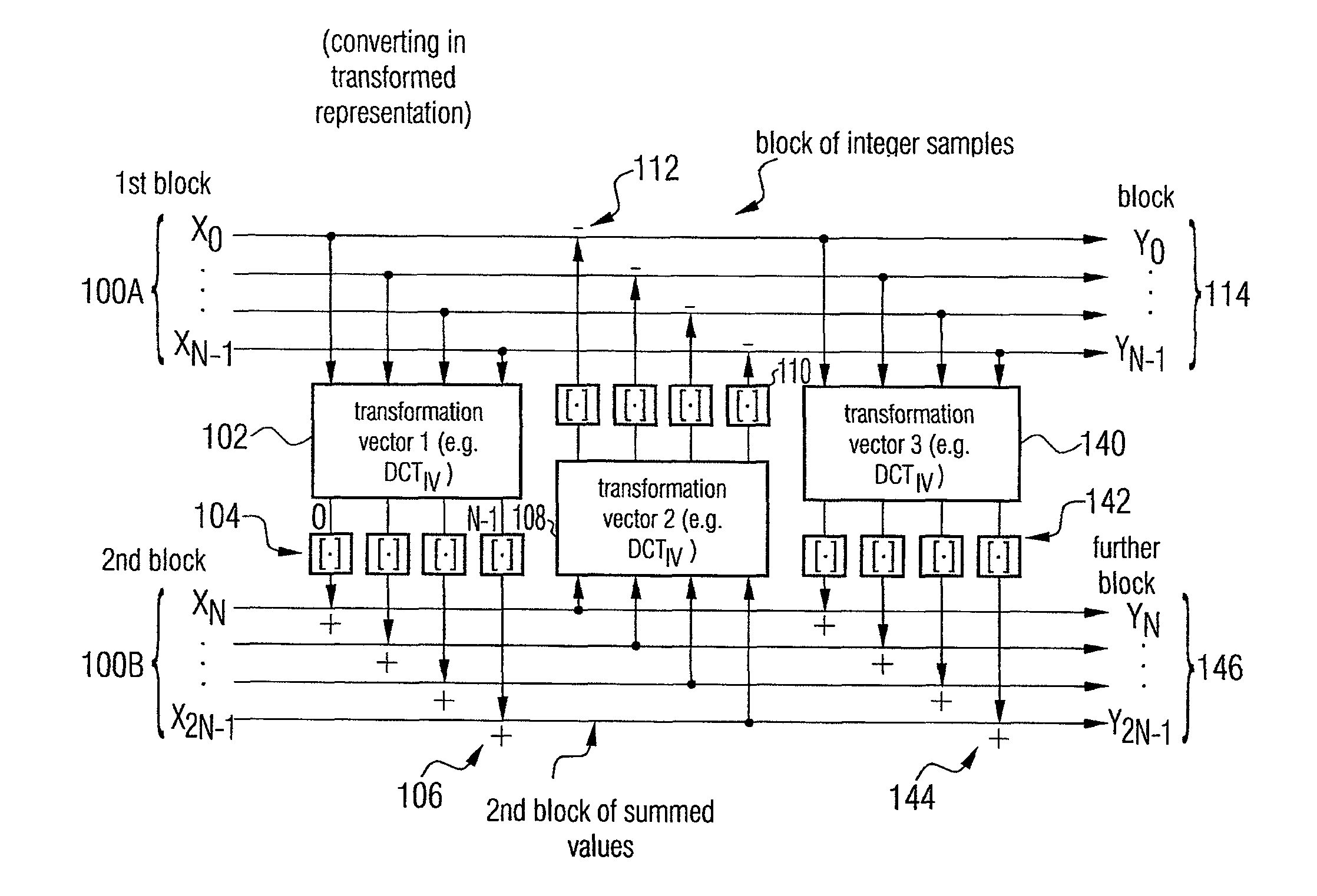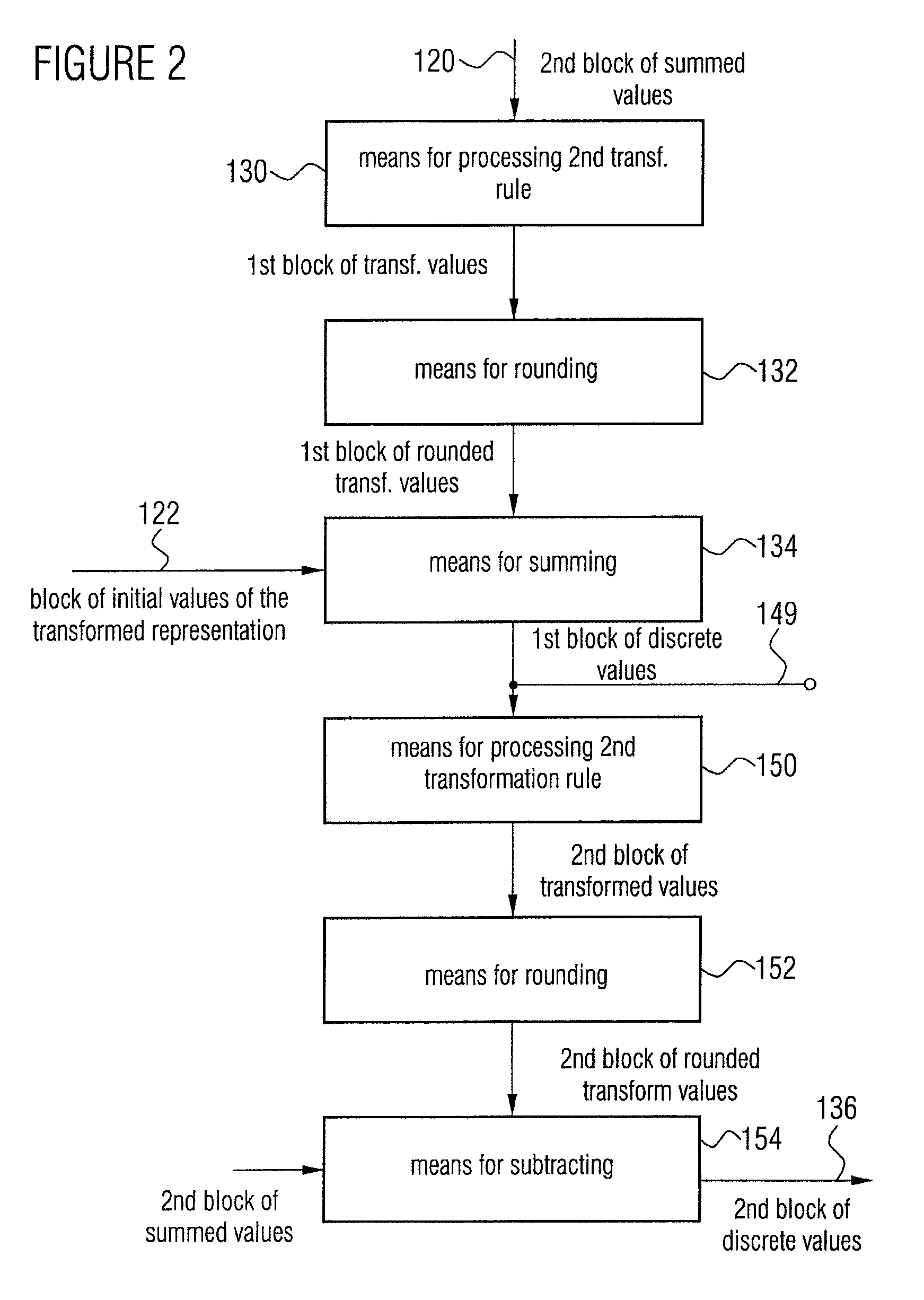Apparatus and method for conversion into a transformed representation or for inverse conversion of the transformed representation
a transformation representation and transformation algorithm technology, applied in the field of compression algorithms, can solve the problems of rounding error introduced in every step, rounding error keeps accumulating, approximation error becomes particularly problematic for lossless audio encoder approaches,
- Summary
- Abstract
- Description
- Claims
- Application Information
AI Technical Summary
Benefits of technology
Problems solved by technology
Method used
Image
Examples
Embodiment Construction
[0052]FIG. 1 shows an inventive apparatus for converting discrete values into a transformed representation with integer values. The discrete values are fed into the inventive apparatus via a first input 100a as well as a second input 100b. The first block of discrete values is fed in via the input 100a, while a second block of discrete values is fed in via the input 100b. The discrete values represent audio data or image data and video data, respectively. As will be explained below, the first block of discrete values and the second block of discrete values can actually comprise two blocks of audio samples successive in time. The first and second blocks of discrete values can also comprise two images and residual values, respectively, represented by discrete values after a prediction or difference values in a difference encoding, etc. Alternatively, the two blocks of discrete values can have been subject to preprocessing, such as in the integer implementation of the MDCT, where the f...
PUM
 Login to View More
Login to View More Abstract
Description
Claims
Application Information
 Login to View More
Login to View More - R&D
- Intellectual Property
- Life Sciences
- Materials
- Tech Scout
- Unparalleled Data Quality
- Higher Quality Content
- 60% Fewer Hallucinations
Browse by: Latest US Patents, China's latest patents, Technical Efficacy Thesaurus, Application Domain, Technology Topic, Popular Technical Reports.
© 2025 PatSnap. All rights reserved.Legal|Privacy policy|Modern Slavery Act Transparency Statement|Sitemap|About US| Contact US: help@patsnap.com



